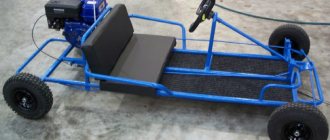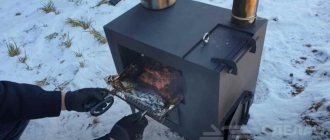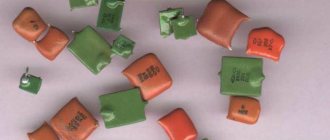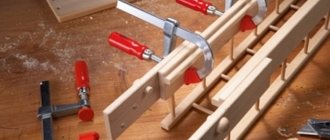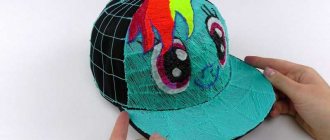Plastic welding is an effective way to lay polypropylene pipes and repair plastic products. A uniform seam is obtained by heating and melting. Special devices are designed for this. Anyone can learn to work with them. When choosing a technology, the advantages and disadvantages of each method are taken into account.
Welding plastic is the most economical technological method.
General information about welding thermoplastics
Connecting plastic parts by heating is a technology that has long been used in industrial settings and home workshops. The use of hot methods is only possible when working with materials belonging to the group of thermoplastics. This is the name for types of polymers that fully retain their characteristics after heating, melting and cooling. This is their difference from thermosets, which are destroyed by heating and final processing.
At high temperatures, such materials burn, while thermoplastics melt.
Solution 1: Gluing
This repair method is quite simple. It will require a special glue, we use dichloroethane, it is the most affordable and glues ABS plastic perfectly. You will also need a brush, preferably a synthetic one. It is convenient because after the first use, the glued hardened hairs can be trimmed, and the rest of them can be heated, the hairs will fluff up, and the brush will still serve you.
So, take a brush, moisten it in dichloroethane, apply it to the parts or parts to be glued - first on one, then on the other. It is better to put the composition in two layers, since the first, preliminary one, will begin to actively corrode the plastic... We apply the parts to each other, press and wait. Dichloroethane takes quite a long time to dry, up to six hours. With patience, we get the whole part!
Types of plastic with weldability characteristics
The joining method is chosen in accordance with the type of polymer and its characteristics.
They are distinguished by high weldability:
- Polyethylene. Products made from such plastic are joined by melting the edges, which are then combined under pressure to prevent deformation.
- Polypropylene. The material is used in the production of pipes, which are connected using a 1500 W electric soldering iron. By increasing the temperature at the junction, the 2 elements are tightly fastened. The properties of the material help to obtain a seam that does not allow moisture to pass through.
- Polyvinyl chloride (PVC). Plastic does not deform when heated. The welded joint is strong and uniform.
Polypropylene is a synthetic thermoplastic non-polar polymer.
The following polymers have medium or low weldability:
- Polystyrene. The polymer is used in the manufacture of dishes, toys, and household items. Parts made from this polymer have rather poor weldability and require careful preparation.
- Polyvinyl chloride. It is not recommended to use hot methods when comparing elements from such a polymer. This is explained by the possibility of edge deformation, which impairs the quality of the seam. Cold methods are more effective.
We recommend reading: How to solder polypropylene pipes
Soldering plastic at home - Metalworker's Guide
Many motorcyclists and motorists have to deal with the fact that the plastic parts of their vehicles (most often bumpers) receive some damage and lose their former appearance.
But instead of buying a new spare part, you can restore the old one yourself by soldering. Soldering plastic is not that difficult.
Necessary tool
Necessary tool
In this case, the following soldering tools can be used:
- an ordinary 100-watt soldering iron;
- hair dryer (also called a heat gun);
- Soldering Station.
The capabilities and operating principle of a conventional soldering iron are familiar to almost every home craftsman. Such a soldering apparatus may have a straight or curved tip.
The hot-melt gun solders plastic by supplying heated air. The heating temperature ranges from +80 to +600 ℃, it can be continuously adjusted.
As a rule, models of soldering guns are equipped with a large number of attachments that make this tool as convenient and efficient as possible.
The nozzles help direct the air to the desired area and create the required angle of inclination. High-quality hair dryers for soldering plastic have a power of at least 1600 watts.
The soldering station combines a regular soldering iron and a hot-melt gun for plastic. Such a unit is capable of solving many problems. Temperature adjustment and a huge number of attachments allow you to carefully solder plastic, as well as other materials.
Types of plastics
Types of plastics
In order to successfully repair a car element, it is worth determining in advance what kind of plastic it is made of. All plastics can be divided into hard and soft. In particular, fiberglass plastics that do not have any markings are considered soft.
Hard types of plastics can have different markings, for example, ABS, GF30, PAG6. The markings are visible if you look from the back of the vehicle part. Polypropylene (PP marking) is considered the most durable.
Quite often, vehicle owners require soldering of ABS plastic, since it is from this material that the bumpers of cars of many well-known brands are made.
Use of a soldering iron
Use of a soldering iron
Let's assume that the plastic bumper of a car is seriously damaged and needs to be repaired by soldering. How to do it?
To make it easier to solder the structure, it must be removed from the car. It also doesn’t hurt to look at the labeling in advance. Most likely, the part will be made of ABS plastic.
Then you should clean the surface of the bumper from dirt, remove paint and varnish residues. Additionally, the entire plastic part must be degreased. Next, you need to connect all the fragments of the bumper together.
For such a connection, it is important to use clamps or staples. But this must be done carefully so that they do not penetrate through the car plastic.
Soldering plastic with a standard soldering iron should begin from the inside of the car bumper . To do this, one of its edges is securely fixed, and special plastic electrodes are laid along the future seam (although the name “electrodes” in this case is very arbitrary).
At the next stage, a soldering iron for soldering plastic melts the electrode material, and it fills all the recesses of the crack. This operation must be repeated as many times as stitches need to be made, that is, it all depends on the initial number of defects and damage.
Now you need to wait for the molten mass (characteristic bubbles appear on it) to cool a little - this will take about five minutes. Then you need to smooth out the seams on the plastic.
In principle, any blunt object can be used for this procedure. In hard-to-reach places, the surface can be smoothed and leveled with gloved hands. Complete hardening of the seams will occur in a few hours. At this point, the soldering of the auto plastic can be considered complete.
Using a hair dryer
Using a hair dryer
Soldering automotive plastic is done a little differently if a heat gun (hair dryer) is used. Here you will need special welding rods (essentially, this is solder for soldering plastic).
You can purchase them in specialized stores or even make them yourself. The main thing is that they are similar to the material being welded. One of the ends of the rod is sharpened and then inserted into the corresponding hole in the nozzle of the heat gun.
The hair dryer should be moved slowly along the crack being repaired; the filler rod should be inclined towards the workpiece at an angle of approximately 45°. If a plastic part has shattered into separate pieces, then soldering it with a hairdryer is carried out in two passes.
First, the pieces or fragments are fastened together with short stitches (seams). And only after this the final reliable soldering is made. When the material has cooled, the surface of the part is puttied and sanded, preparing for painting.
To repair the plastic of a motorcycle, all kinds of elements of its external design, you can use soldering using approximately the same technology as in the case of repairing a car bumper. Moreover, motorcycle panels are usually made of the same ABS plastic.
Reinforcing mesh
Reinforcing mesh
Also, home craftsmen can use in their work such a device as a reinforcing mesh for soldering hard plastic.
It is needed to ensure that the final result is stronger and more durable. This mesh is placed on the inside of the structures.
Then, using a soldering iron or hair dryer, it is heated and, in this state, pressed into the plastic using a screwdriver. The mesh should become a kind of frame that holds and strengthens the part.
Excess plastic resulting from reinforcement can be removed using a grinding machine or an ordinary knife. If you work carefully on the outside, traces of cracks and breaks will not be visible even close up.
Soldering plastic: tools, technology
Soldering plastic: tools, technology
Water and gas pipes made of plastic are quickly and confidently replacing their metal predecessors. And this is not surprising, because such communication elements are lightweight, reliable, and easy to install.
However, when installing plastic pipes, it is often necessary to create connections using thermal effects on the edges of the material. Let's find out how plastic soldering is done and what tools can be used for these purposes.
Soldering with a specialized welding machine
Soldering with a specialized welding machine
A soldering iron for plastic is a kind of “iron” that contains special holes for pipes of various diameters. The edges of the latter are placed in the appropriate openings, after which they are heated to melting temperature.
Soldering plastic using the machine is performed in the following sequence:
- The evenly cut end of the pipe is inserted into the heating sleeve. The device is connected to the mains. The metal surfaces of the unit are heated to the required temperature. Next, the edges of the plastic pipes are melted.
- After the material has softened, the pipes are abruptly removed from the connectors and connected to each other in fittings. In this case, a noticeable influx of molten material should form at the junction of the edges.
- Before heat treatment of the edges of the next pipes, the welding machine is thoroughly cleaned of any remaining frozen material.
Soldering plastic with hot metal
Soldering plastic with hot metal
The simplest, most accessible, but less reliable method for connecting elements of plastic products is thermal exposure using heated metal.
In this case, it is enough to heat an iron plate or any other suitable tool. It is advisable to fix the latter in a vice, and then lean the edges of the parts against the hot surface.
As soon as the melting of the necessary elements of the products occurs, they must be removed from the plate and firmly pressed together.
Before soldering plastic using this method, it is recommended to clean the surfaces of the parts to be joined from any contaminants that may interfere with the tight joining of the material. If materials are stained with oils, alcohol, acetone or white spirit should be used as degreasers.
Soldering using a gas torch
Soldering using a gas torch
Do-it-yourself plastic soldering can be done with heated gas emanating from the burner nozzle. Nitrogen, carbon dioxide, and argon can serve as refueling here.
The choice of the type of gaseous substance depends on the characteristics of the plastic that will be melted.
As practice shows, the most durable connections using the thermal method of joining plastic parts can be obtained by heating the material with argon or nitrogen.
The presented soldering technology allows work to be performed with or without additives. In the first case, a plastic rod with a diameter of no more than 6 mm is used, the melting of which makes it possible to create a fairly thin, neat, but at the same time durable seam. The additive must be made of a material identical to the elements being connected.
When using a gas burner, the temperature at the outlet of the device nozzle must be maintained at least 50°C higher than the fluidity index of the material being processed.
The processing method is relevant not only when it is necessary to connect pipes, but also in cases where restoration of a car bumper, interior elements, and other parts is required. In such situations, a plastic solder mesh is often used, which is placed over the damaged areas and then filled with molten material.
Soldering hair dryer
Soldering hair dryer
A hot air gun is suitable for joining plastic elements. Here, the heating of the working surface is ensured by connecting the device to the electrical network.
The soldering dryer contains a mechanism that ensures uniform distribution of heated air on the surface of the workpiece. To ensure a high-quality tight connection of plastic elements, various nozzles are used during melting. Their size and shape are selected depending on the nature of the materials to be processed.
Soldering with chemical solvents
Soldering with chemical solvents
Connecting the edges of plastic parts using the presented method involves wetting the material with a solvent. After some time, the polymers begin to swell and acquire a viscous structure.
In conclusion, it is enough to join the elements and hold them under pressure for some time until the seam hardens. The connections gain strength after several hours.
Hot welding methods and necessary equipment
The following tools are used to connect plastic elements by heating:
- manual units that produce a stream of hot air;
- extruders;
- devices for joining sheet polymers;
- automatic welding units.
A plastic welding hairdryer can be used to join any thermoplastics.
To choose the right thermoplastic welding tool, you need to study the operating principles, advantages and disadvantages of each device.
Handheld hair dryer or gun
Together with such equipment, a consumable material is used - a rod, which is placed between the elements to be connected. After this, the seam is heated with a construction hairdryer. The device resembles a household appliance used for drying and styling hair. The temperature and power of an industrial hair dryer are higher. Thanks to this, the edges of the elements being welded are melted, forming a homogeneous mass. As it hardens, it holds the parts together.
The temperature of the air stream is adjusted automatically or manually. The kit includes attachments that help connect plastic elements end-to-end or overlapping. The nozzle configuration is selected depending on the type of plastic, the thickness of the parts, and the experience of the welder.
Household hair dryers are used to perform routine operations. Industrial options are designed for laying polymer pipelines.
Extruder
The device is similar to a gun, at the end of which there is a nozzle for fixing a filler rod or tube.
An extruder is a machine for continuous processing of polymer raw materials.
The operating principle is based on:
- heating the consumable to a semi-liquid consistency;
- removing mass to the junction of parts;
- solidification of the melt followed by the formation of a seam.
Using an extruder, you can weld elements of any thickness in one pass. The performance of the device is higher than that of a hair dryer. The main disadvantage is the inability to weld products made from different types of plastic. This is due to the difference in melting temperatures. Before starting work, the edges of the parts are cleaned of traces of dirt and grease that can impair the quality of the seam.
We recommend reading: Heating temperature of polypropylene when soldering pipes
contact welding
The equipment produces short-term heat pulses applied in combination with pressure. The devices are used at production sites where welded polymer sheets are produced.
How to choose a soldering iron for soldering plastic?
In case of an accident, bumpers take the main load. The part is damaged and therefore needs to be repaired. To do this, use a special soldering iron for plastic. With its help, you can level the surface, eliminate cracks and connect broken elements.
Requirements for soldering irons for plastic
Requirements for soldering irons for plastic
The main characteristic of such devices is power. For efficient and comfortable work, it is recommended to use a device with at least 100 W. If you use a soldering iron of lower power, the plastic will not melt. When choosing thermal hair dryers, you need to pay attention to devices from 1600 W.
Another requirement is the heating speed of the soldering tip. For processing plastic elements, it is recommended to select options that heat up in 7-10 seconds. For domestic use, you can take equipment with prolonged heating, but for professional activities this will be associated with some inconveniences.
Tool types
Tool types
The modern market offers several types of tools for working with plastic parts. Among them:
- Devices with standard configuration . This tool can have a curved or straight soldering rod. Most often it is used to connect broken plastic elements. Standard models create strong seams due to high temperature exposure and can work at different angles.
- Thermal gun . The equipment is designed to correct the deformation of parts and solder them. The soldering gun is equipped with temperature control, which expands its scope of application. This bumper repair kit may include additional attachments that simplify and speed up the work.
- Hot air station for soldering . This tool is universal. It combines a hot air gun and a standard soldering iron. Additional attachments may be sold with it.
What to look for when choosing
What to look for when choosing
When choosing a soldering iron, you must take into account that it is designed to heat plastic. In this case, you should pay attention to several characteristics. First, the equipment must have optimal power, otherwise the plastic will not melt. The optimal indicator is at least 100 W.
Secondly, a soldering iron for car bumpers should have a convenient design. The user should not experience any discomfort when working with it. In addition, you need to choose a reliable unit from a trusted manufacturer.
Experts recommend giving preference to models equipped with wooden handles. This material does not heat up and does not lose its performance properties for a long time under the influence of high temperatures.
Best models
Best models
A soldering iron for repairing plastic parts is an expensive device, which is explained by its technical characteristics and operating features. There are several of the most reliable and effective devices on the domestic market:
- Steinel . This brand produces a whole repair kit, which includes a heat gun. The device has a power of 2.3 kW. With its help, plastic can be heated to a temperature of 650°C. Sold in a durable polymer case with additional accessories (electrodes, extension cord, etc.) and attachments.
- RT-2003 from Intertool . This device is great for processing thin plastic materials.
- Teroson . A convenient kit for repairing plastic parts, which contains a heat gun. Additionally, the device comes with attachments and accessories, including mixers, replaceable cartridges and reinforcement materials.
- Neiko . This tool is professional and made in China. Its power is 1600 W. Additionally, a special roller and attachments are supplied with it. Precisely selected components can ensure fast and simple operation. The advantage of Neico is that you do not need to purchase auxiliary materials for it.
- Stapler . Budget class model with a power of 100 W. The seams are created using special staples, which is why the tool got its name.
- Lukey . This is a cheap Chinese model. It is perfect for beginners and home use.
It is necessary to choose a tool taking into account your goals and financial budget.
Application area
Application area
In most cases, a soldering iron is used in car repair shops for processing plastic elements. They are used to repair bumpers, mirror structures, interiors, torpedoes, body kits, etc.
In addition, this device makes it possible to quickly and easily repair broken plastic parts on motorcycles, ATVs and bicycles, boats and yachts.
In a private home, a soldering tip for plastic is useful for repairing pipes, polymer frames of greenhouses and greenhouses.
How the tool works
How the tool works
The surface to be treated must first be lubricated with a degreasing compound and sanded. This will make it possible to achieve the highest quality docking.
Using a standard soldering iron model, you simply melt the edges of the element, then fix them to each other and expose them to temperature.
If the operation was performed correctly, a strong seam will appear at the junction of the plastic parts.
Treatment with a hot air gun is carried out using a similar principle. A targeted flow of hot air ensures the transition of the polymer into a liquid state.
If you are leveling defects, you need to wait until the car bumper softens and becomes plastic. Only after this can you manipulate it.
If the ends of the parts melt, they must immediately be tightly connected to each other and held until completely solidified.
When working with a soldering iron, you must follow the following rules:
- To make the tool heat up faster, it is recommended to clean its tip with fine-grained sandpaper. After prolonged use of the equipment, more thorough cleaning is necessary.
- A broken soldering tip can be replaced with a nail or steel wire.
- To extend the life of the tool, you need to let the transformer cool down when using it.
- When processing highly deformed plastic elements, it is better to use a special electrode. When heated, the material will fill all existing defects.
- Processing must begin with the internal surfaces. This will allow you to set the optimal heating level. If the temperature is not suitable, the defect on the wrong side will be invisible.
- When reinforcing plastic with mesh or staples, metal inclusions must be lubricated with anti-corrosion agents.
By following these recommendations, you can achieve the highest quality fastening of plastic bumper parts.
Gas welding
This option refers to thermal methods of joining plastic products.
How to choose gas for hot welding
Oxygen or argon is often used as a heat source. However, the most economical gas is considered to be air, which does not have a negative effect on plastic.
Oxygen, hydrogen or argon are used as welding gases.
Ultrasound method
The universal method of heat welding involves local heating of the joint to a temperature close to the melting parameter. The dosed thermal effect does not contribute to overheating and deformation of the material, which is sometimes observed when using other methods. The equipment operates with a frequency of 17-45 kHz.
Electrical vibrations turn into mechanical vibrations, which are transmitted to the material being processed.
High frequency welding
The economical method is used in many industries. Welding is carried out using 2 metal electrodes, between which a current with a frequency of 30-75 MHz circulates. A high-frequency electric field heats the edges of the parts to the required temperature. After matching, the edges are cooled naturally. The method is suitable for connecting elements with a thickness of 0.5-2 mm. In this case, 2 welding methods are used: overlap or butt.
High-frequency welding is a pressure welding method in which the edges of parts are heated by current.
Friction method
Strong friction contributes to the release of thermal energy, which partially melts the edges of the parts. Compression under high pressure leads to the formation of a uniform, strong seam. The main advantage of the friction method is high productivity. The disadvantage is that it can only be used for welding hard types of thermoplastics.
Using a laser
Due to its high cost, this technology is rarely used in domestic settings.
In industry, the laser method is used for:
- assembling cars on automated lines;
- production of electronic devices, which requires careful handling of small plastic parts;
- manufacturing of medical instruments and devices where it is necessary to create sterile conditions;
- packaging of meat and dairy products.
The laser method helps to weld structures of complex configurations. Other methods in this case are ineffective.
Surface dissolution
A simple technology is based on chemical melting of the edges followed by fixation under pressure. Heat can be used to speed up operation. The main disadvantage is the toxicity of the substances used in the work. The method is not recommended for use at home.
We recommend reading: Which soldering iron is the best for PPR pipes?
Selection of welding rods
These elements play the role of electrodes. They are used for soldering sheet plastic, pipes, and polyethylene objects. The size of the rods varies, as does their shape. The diameter of round bars is 3-7 mm. Rods with a square cross-section are large in size.
Plastic welding rods can be made from a wide variety of materials.
To connect polymer products, 2 types of consumables are used:
- Polyethylene rods. They have a fairly low melting point. Used for welding products made of the appropriate material using a hair dryer.
- Polypropylene rods. The elements do not deform and do not lose their working properties during long-term storage. The products are used in the assembly and repair of structures made of sheet polypropylene. Electrodes made of this material are used in conjunction with extruders that melt them to a liquid state.
Which method is better for home use?
The following technologies are most often used in everyday life:
- Welding with a soldering iron. The tool has a low price, which allows it to be used even for the simplest operations. A soldering iron is used to weld pipes, containers, and car bumpers. The tool melts the surfaces at the joint, which are then matched and fixed. This method can be used to connect pipes of different diameters.
- Gas welding. At home, use a hairdryer or burner. The heated gas melts the plastic, which helps form a uniform seam. An inexpensive welding tool helps you join plastic parts of different shapes and sizes. It is used in the repair of thin-walled polymer products. The process is carried out with or without the use of filler material. Plastic rods or strips are used as consumables.
- Extruder connection. The gun is equipped with a heating element that melts the consumable material. The equipment is also equipped with a regulator that helps change the exposure temperature. Heat losses are minimal, which explains the high efficiency of the equipment.
Use of a soldering iron
Let's assume that the plastic bumper of a car is seriously damaged and needs to be repaired by soldering. How to do it?
To make it easier to solder the structure, it must be removed from the car. It also doesn’t hurt to look at the labeling in advance. Most likely, the part will be made of ABS plastic.
Then you should clean the surface of the bumper from dirt, remove paint and varnish residues. Additionally, the entire plastic part must be degreased. Next, you need to connect all the fragments of the bumper together.
For such a connection, it is important to use clamps or staples. But this must be done carefully so that they do not penetrate through the car plastic.
Soldering plastic with a standard soldering iron should begin from the inside of the car bumper . To do this, one of its edges is securely fixed, and special plastic electrodes are laid along the future seam (although the name “electrodes” in this case is very arbitrary).
At the next stage, a soldering iron for soldering plastic melts the electrode material, and it fills all the recesses of the crack. This operation must be repeated as many times as stitches need to be made, that is, it all depends on the initial number of defects and damage.
Now you need to wait for the molten mass (characteristic bubbles appear on it) to cool a little - this will take about five minutes. Then you need to smooth out the seams on the plastic.
In principle, any blunt object can be used for this procedure. In hard-to-reach places, the surface can be smoothed and leveled with gloved hands. Complete hardening of the seams will occur in a few hours. At this point, the soldering of the auto plastic can be considered complete.

